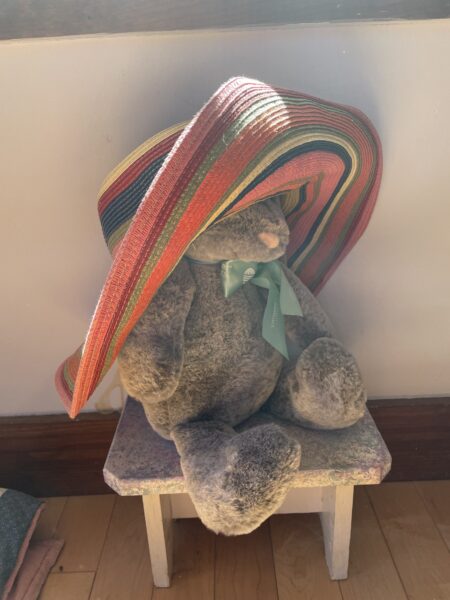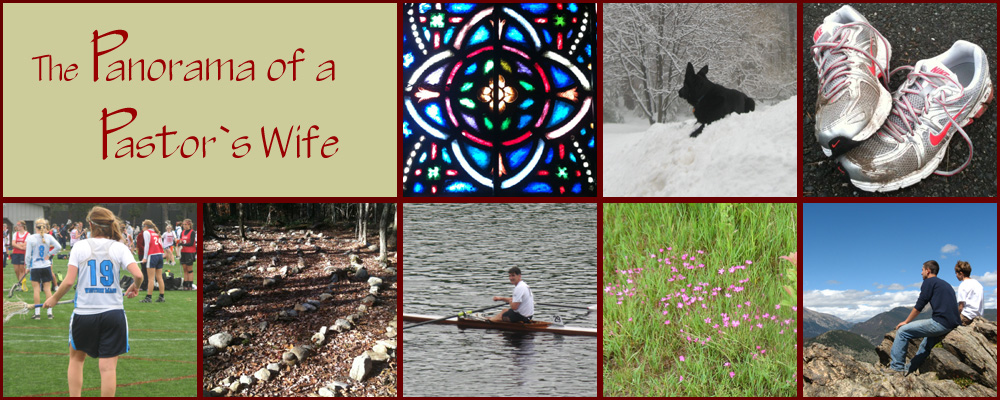Almost Easter
A good friend of mine, way out in the Pacific Northwest, said something like this on the phone last night: “Sometimes it feels more right to say, ‘Here we are!’ than ‘Here we go!’ ” I think her point was that it can startle us to recognize that we’re actually in a time that we might have preferred to think would remain in our future. Or, said otherwise, we may not want to see ourselves as old, but we’re damn close.
This Was So Last Weekend
If I’d posted this when I’d intended to, on Palm Sunday, I might have had good reason to look ahead to the coming days; as it is, however, I’m sheepishly trying to write more or less the same piece I had in mind six days ago, even though a lot has changed since then, considering where we are in the most important Christian story (with all due respect to both Passover and Ramadan; faith traditions all coinciding this year, more than usual). So at least one contrast here is between one end of the week and the other. Another one will be between two women — neither one associated with Easter, alas — who are main characters in very different tales.
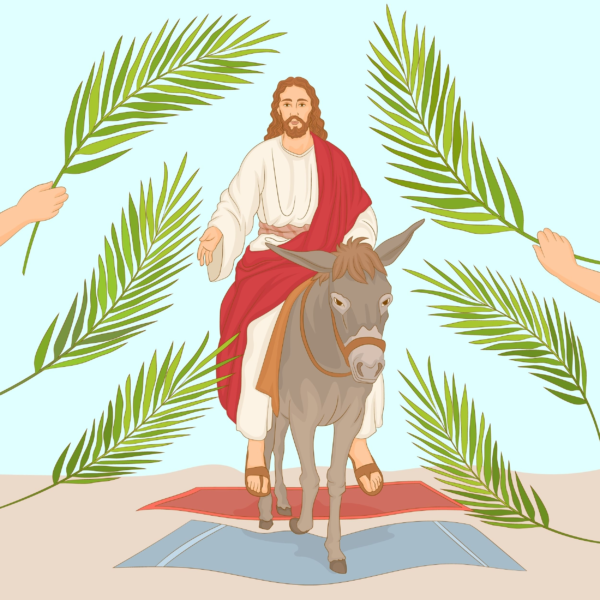
Those fronds are things of the past now, and the donkey (love how s/he is depicted here) has done his duty in bringing Jesus into Jerusalem. Tomorrow, people will be out in their bright Easter colors, rejoicing after having been through the powerful sequence of the Passion, once again.
Thanks to my husband, I am always gently pulled along through the specific details of this week, without shouldering key responsibilities. This is partly why I admit to having allowed myself to linger longer than usual over those palms that are nowhere to be seen anymore. The one I brought home from church (yes, I went, and just down the road, too) looked somewhat bedraggled, especially after I tore it in half and put it down on our dining room table, which has such a rich, deep brown color.
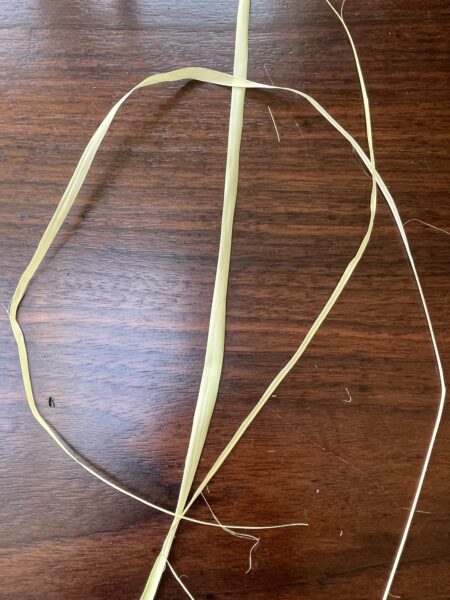
Our Bookish Household
And why would I do this? Because the thin, long, yellow-green piece of vegetation reminded me of a different species of plant that I’d just finished reading about.
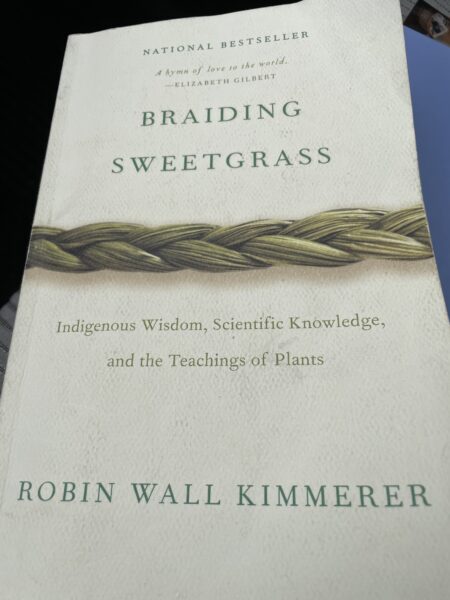
Funny thing was, my husband himself suggested that we each read this national bestseller during Lent, enabling us to discuss it. I thought that was so sweet — like the grass! Only trouble was, I was still enjoying the library book about Epicurus, mentioned in my last blog, and couldn’t bear to drop it entirely for this one. So instead I tried to straddle the two — kind of like Jesus who, according to at least one Gospel, was supposed to ride both a donkey and a colt, at the same time? In any case, Rob finished well ahead of me, but not wanting to miss an opportunity for a good suppertime discussion, I was still game to talk about half of the book while appreciating his comments on the full 384 pages. We described our favorite chapters: his — “Collateral Damage,” about salamanders on the move; mine — “The Three Sisters,” about how corn, beans, and squash grow best together.
The subtitle is accurate: three distinct strands run all the way through. The word “Teachings” is interesting, too, because it suggests that “Plants” are akin to a very, very wise person — like Buddha, for instance. Not mentioned in any part of the title but clearly present throughout this book celebrating Nature is the word “Mother.”
In the opening pages, before the author delves into the wonders of many species of plants, she draws a fascinating contrast between two particular women, both of whom can be considered our ancestors.
Talk About Different Stories
The first, familiar through a creation story embraced by many Indigenous peoples, is known as “Skywoman” because she fell from the sky down, down, down, clutching a collection of seeds, to where there was only water. Thanks to the help of a variety of creatures, she is able to start forming what we now live on as Earth, right on a turtle’s back. This is best photo I could find that suggests the phenomenon (if you ignore the other glimpses of land elsewhere). In the full story, she has lots of happy company — members of other species — once her main work is done.

The second woman is one you’ve probably heard more about: good ol’ Eve, who comes only second to Adam. Instead of getting to be the one who helps everything grow and then enjoys the harvest, she has to scram when she tries to enjoy a piece of fruit. There’s more than that to the story, of course, in the Book of Genesis — especially adding that nasty Serpent — and I don’t intend to make light of it. Today, thanks to Braiding Sweetgrass, I’m interested in how she appears, what she signifies even, if beheld alongside Skywoman.
Last week when we visited the Currier Museum (first time back since Covid — a great pleasure) we saw one artist’s imaginative depiction of Eve, looking longingly at more than just one apple. Here, she’s inside somewhere, pulling back a curtain. Wherever she goes, though, we can count on her to experience temptation, to flirt with danger, to be punished rather than feel fulfilled.
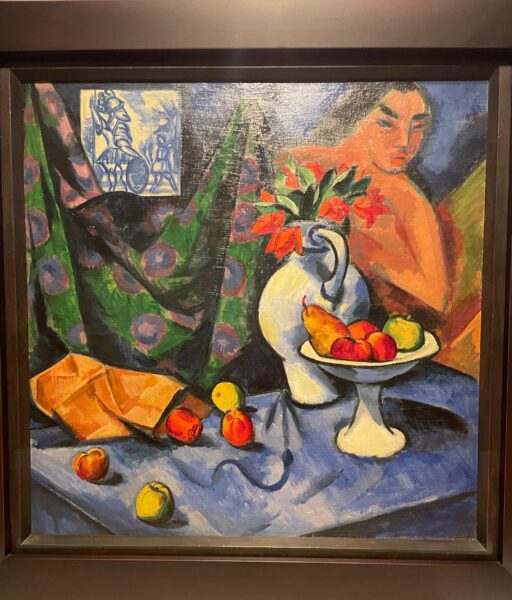
Here’s how Robin Wall Kimmerer describes the difference between the two:
……One woman is our ancestral gardener, a cocreator of the good green world that would be the home of her descendants. The other was an exile, just passing through an alien world on a rough road to her real home in heaven.
And then they met — the offspring of Skywoman and the children of Eve — and the land around us bears the scars of that meeting, the echoes of our stories. (p. 7)
This may seem over-harsh. What do you think? The whole premise of the book, as I understand it anyway, is asking us to consider how we can work out the difficulties that have ensured from these two different origin stories, to bring about more reconciliation as well as restoration in our relationships with the rest of Creation. None of this is easy, given the kind of fixes we’ve gotten ourselves into, thinking we can just take what we want instead of working as partners with the other inhabitants of our home.
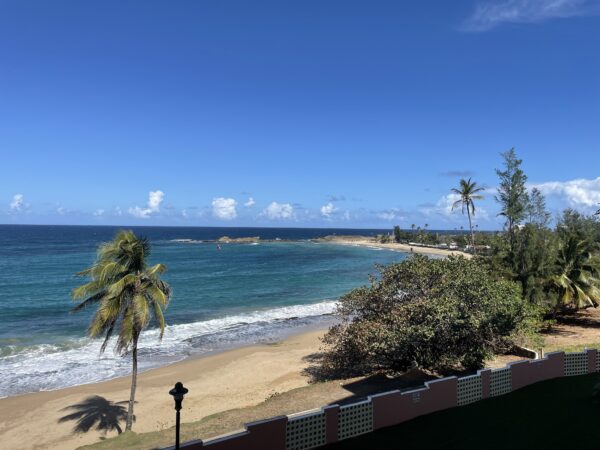
Making Our Own New Stories
What has any of this got to do with Easter, almost here? That strand of palm I brought back from church last Sunday looked, let’s face it, pretty sad. So I’m going to choose to remember how a whole palm tree, many of them in fact, danced in the wind before our very eyes, while the waves lapped gently on the beach, when we were lucky enough to be in Puerto Rico a few months ago. I’ll also make sure to notice how the buds coming out around here are in such a variety of colors, none of them screaming about their presence, either; how the robins are appearing in small groups, hopping around in the grass, heads up and ever-hopeful.
And tomorrow, putting aside the vexing contrast between Skywoman and Eve, and any stress about aligning with one or the other of them, I may just claim my own identity in this hat. Happy Spring, all!
